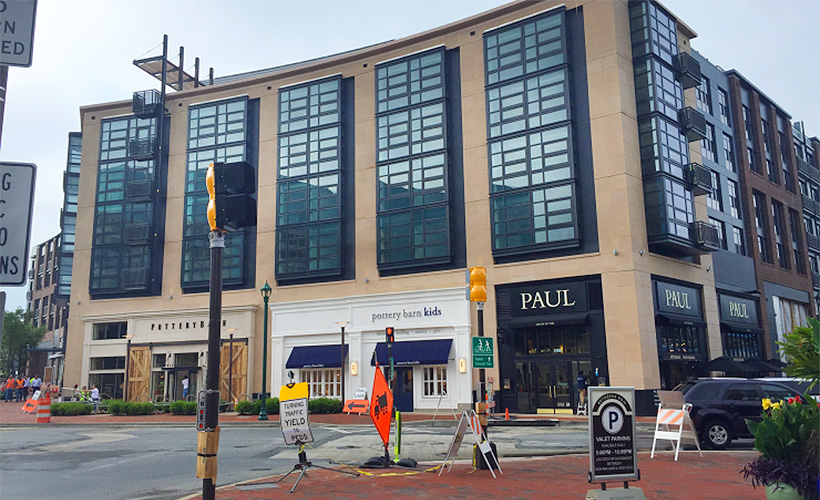America’s rental apartments are full. Historically full, in fact. The national occupancy rate hit 95.3 percent in May, the highest on record, according to Axiometrics, a real estate analytics firm.
“The May rate historically is the start of each year’s occupancy peak, meaning occupancy should remain at the current level or higher,” said Stephanie McCleskey, Axiometrics’ vice president of research.
With higher occupancy comes higher rents; in May rents grew 5 percent nationally, the fourth straight month at or above that mark. Rent growth was at just 3.6 percent in May 2014, according to Axiometrics.
“Owners and investors are having a profitable start to the year,” McCleskey said. “One interesting point is that rent growth is increasing in previously challenged markets in the East and Midwest, such as Chicago, St. Louis, Philadelphia, Kansas City, Baltimore and even Detroit,” noted McCleskey.
Apartment demand, which some investors thought would abate as the housing market recovered, is doing just the opposite. It is also coming from both ends of the age scale. Millennials, finally finding jobs and moving out of group or family homes, are pushing rental demand; downsizing baby boomers, many of them soured on homeownership by losses from the housing crash, are doing the same.
“The Great Recession lowered the homeownership rate, and it’s just so hard to get a footing from here, so you are sort of starting from a diminished base, particularly for younger people, but for all age groups,” said Laurie Goodman, director of the housing finance policy center at the Urban Institute.
Goodman just published a paper claiming the homeownership rate, now at 63.7 percent, the lowest in 25 years, will continue to decline through 2030. She said a rental surge is coming, and that of the 22 million households formed in the next 20 years, 13 million will be renters.
“We are nowhere near building enough to meet demand,” added Goodman.
In the vibrant downtown of Bethesda, Maryland, a short bike ride from the D.C. line, developers are readying to cut the ribbon on 162 rental units in what is being called the Flats at Bethesda Avenue. It is part of a new mixed-use development that includes high-end retail, restaurants and multimillion-dollar condominiums, all in the heart of the downtown, which has already undergone a revival in just the past five years.
The lowest price point at the Flats is $2,200 per month for a studio. The most expensive unit is $6,000 a month. The area, which saw little to no apartment construction during the recession, is now booming.
“We’ve had a surge here over the last nine or 10 months, and it’s really taken off. People were concerned about oversupply, but the absorption has been great, and it’s really across the board,” said Douglas Firstenberg, principal of StonebridgeCarras, the real estate development and investment firm behind the project. “There is really a growth in demand in, the term we’re using, ‘rent by choice.’ The older renter who is looking to downsize and doesn’t want to own anymore.”
Firstenberg estimates that more than half of those who have signed leases so far are over the age of 50. They want to be in the middle of an urban area. It is a phenomenon driving development of new urban cores outside major cities as well as new walkable developments in the nation’s downtown areas. Still, it is not happening fast enough.
“There is no question we have a shortage of housing,” added Firstenburg.
The supply issue will vary market to market and price range to price range. Some local municipalities require developers to set aside some units as “affordable,” but the bulk of new renter households will likely be among lower-income families, and those units are not nearly enough.
“The thing to realize about this millennial generation is it’s much more racially, ethnically diverse than the boomer generation, and that means less homeownership. The rate for African-Americans and Hispanics is lower than it is for whites by a considerable amount,” said Goodman.
Rising rents are continuing to put a strain on U.S. households, making up a far larger monthly share of expenses. While multifamily construction last year soared to the highest level since 1989, the timeline for these buildings is longer than for a single-family home, and the rental population is growing ever faster.
Higher rents may drive some to homeownership, but only if renters can save enough for a down payment; that, too, is getting harder.
“Real wages have been absolutely flat for about the last 20 years and actually down for that critical 25-34 age group, student loan debt, particularly for those that don’t finish school is really important, and then finally the question is, has there been a subtle change in attitudes toward homeownership?” asked Goodman.
– CNBC producer Stephanie Dhue contributed to this report.
Source: https://www.cnbc.com/id/102770312 CNBC (June 18, 2015)





